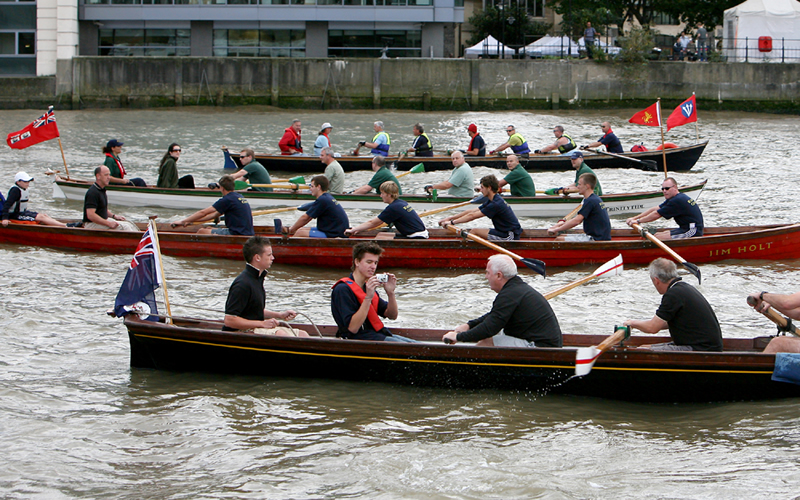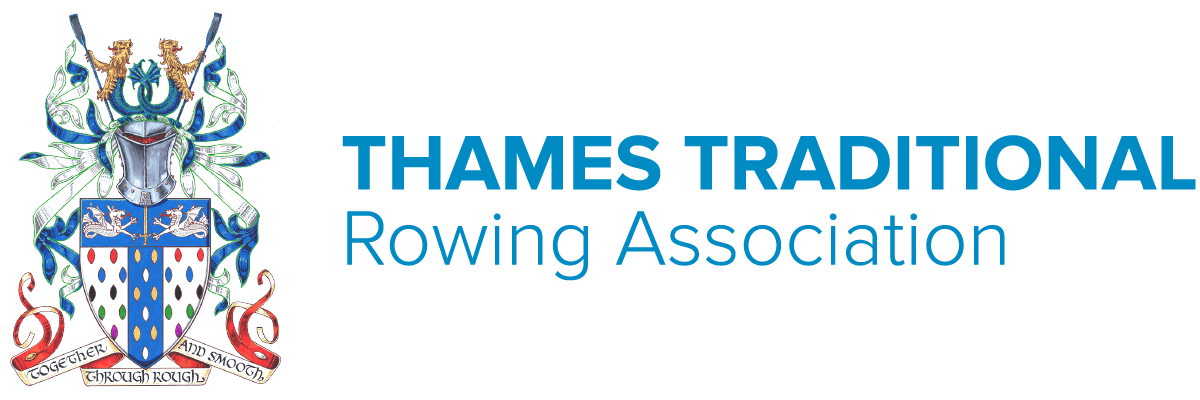Mission Statement
To support and promote the sport of traditional fixed seat rowing and sculling on the River Thames.
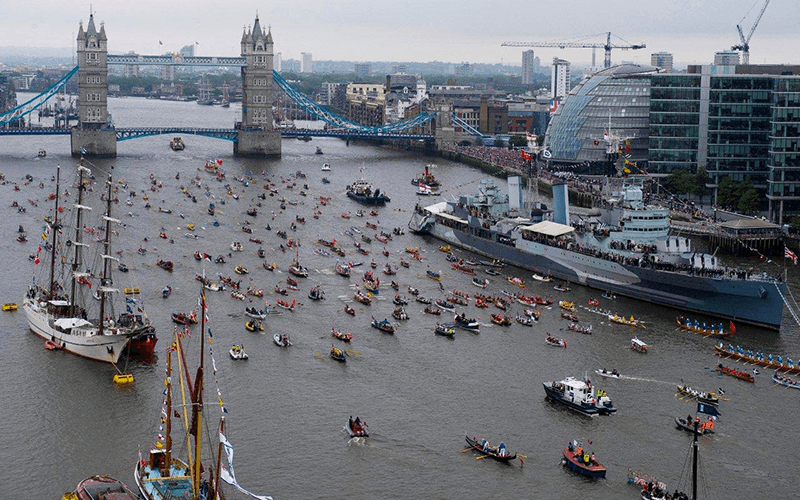
About The Boats
Thames Waterman Cutter
The modern day Waterman’s Cutter is a design based on drawings of boats used by the Watermen of London in the 1700’s. In the 1980’s the organisers of the Great River Race developed the modern day boat and produced the first of the fleet of 24 many of which now compete annually in this Marathon of the River.
The Cutters are 34 feet long with a beam of 4ft 6ins and can be rigged for up to six oarsmen either rowing or sculling. In keeping with their traditional origins they can carry a cox and passengers under a canopy thus in this form resembling the decorated craft commonly depicted in historical prints and pictures of the River Thames in the 17th & 18th Centuries. Now a days with the canopies and armorial flags flying they perform the role of ceremonial Livery Barges on special occasions.
The boats are a robust, stable and fast equally at home on the tidal or non-tidal river or sheltered costal waters. Their adaptability makes them ideal for all standards and ages of oarsmen and women allowing the coach to be aboard for training sessions.
The Watermen’s Cutters annually compete in the Port of London Challenge, the Port Admirals’ Challenge and the Great River Race. Cutter races are also to be found at various town rowing and skiffing regattas.
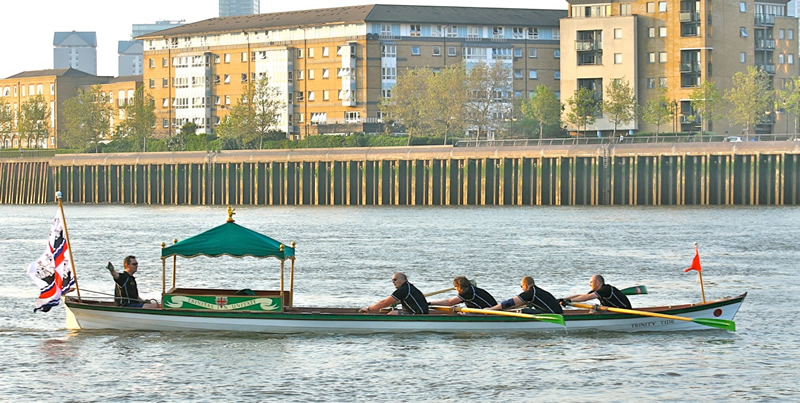
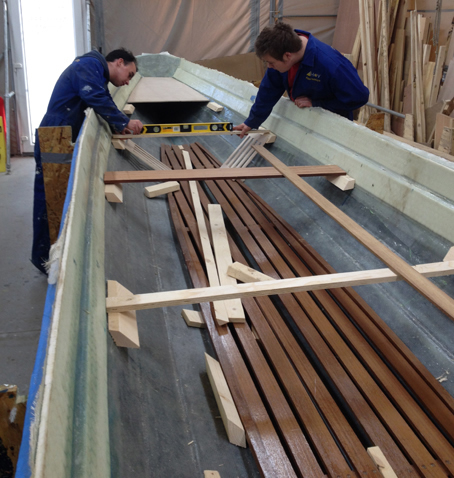
SKERRIES
A skerry is a new design of boat by Richmond’s distinguished boat builder Mark Edwards MBE. He built the famous Gloriana which led the flotilla in the Queen’s Jubilee Pageant in 2012. But the skerry, his latest and most original design, is special.
Mark continues the story……
The name “skerry” was chosen for this new boat design as it combines elements of the traditional Thames skiff and wherry, but this is not the whole story. After many years of building essentially copies of existing rowing boats I realised there remained a gap, and possibly a need for the following:
- allow up to 8 persons to row together with a cox to steer
- have sufficient additional space for up to 3 passengers( including a coach)
- be a safe boat for as wide a range of conditions as anyone would want to go rowing in
- be as fast and responsive as possible, accepting the need to be safe
- be easy to row and steer
- be robust and easy to maintain
- use a method of construction that could be at least in part built by amateurs
- help continue the ancient tradition of wooden clinker boat construction
Hidden within the above list were some more subtle gains. An adult coach is essential to safe tuition of youngsters. To have one bawling from some noisy, wash-making, motor launch alongside may be a necessary evil with fine, sliding-seat “best” boats but far better to have the trained adult in the boat alongside a trainee cox. The coach is best placed to maintain a benign discipline, grabbing rudder lines and taking command if needs be. The relatively short length of a skerry at 9 metres makes the boat much more manoeuvrable than an outrigged eight at twice the length. The beam of 2 metres is needed for the “double banked” oars i.e. 2 persons to each thwart, but this beam is only needed at the gunwale – at the waterline the beam is nearly half this, giving the skerry an exhilarating turn of speed. Other features of the skerry are the rakish skiff bow which allows crews to enter over the bows from a shallow shore, thereby avoiding the need for expensive rafts. As skerries are individually built they can be built with shallower or deeper sides dependant on the conditions envisaged. No longer do youngsters need to row with their hands at head height. While skerries are traditional in the way of design and basic clinker construction, they are constructed of top quality 9 mm marine ply and are epoxy-coated externally and in their bilge to reduce maintenance to a minimum. What annual maintenance is needed can be undertaken by crews during winter months, adding value to the whole team boating experience. The all-wood construction means that no matter how damaged, all parts will float and there is additional buoyancy built into the design, just in case. Other safety equipment can be carried very easily. Oars can be of wood or carbon fibre and just drop into the bronze rowlocks which are themselves removable. The rowlock sockets double as sockets for hoops that support an all over cover allowing boats to be left outside all year if needs be, with oars stored within the boat, avoiding the need for an expensive boathouse. Skerries can be hauled out onto a two-wheeled truck and taken long distances very easily, say for winter storage in school grounds.
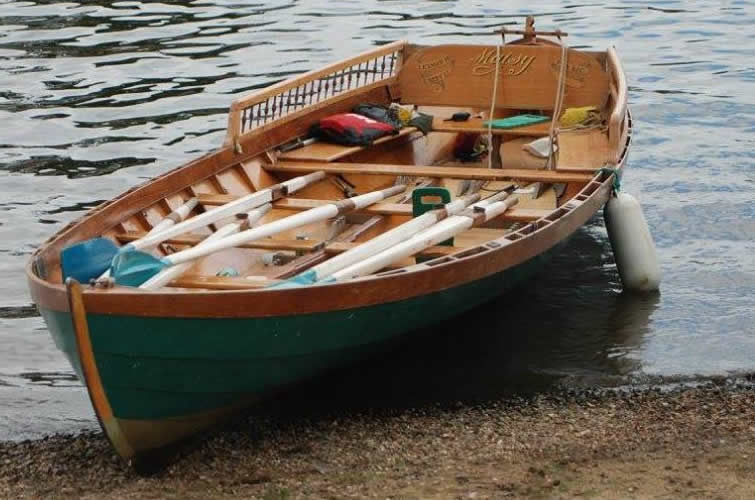
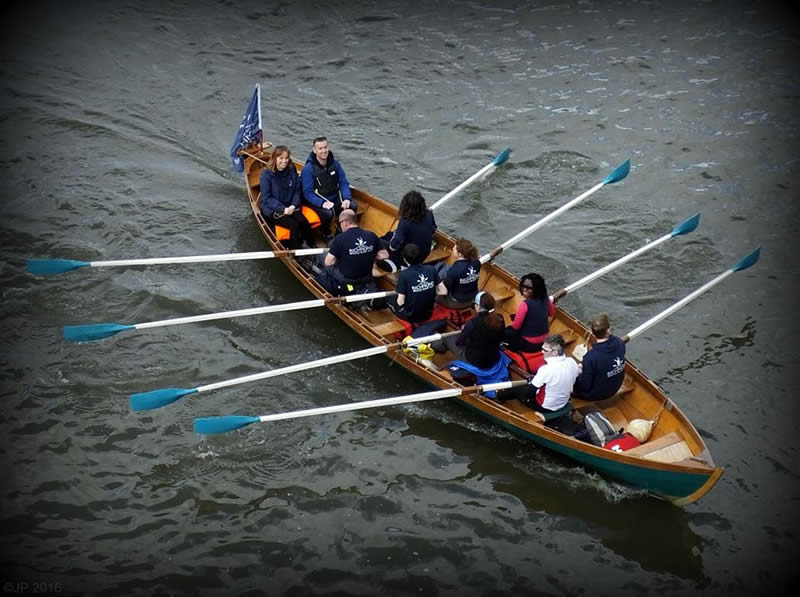
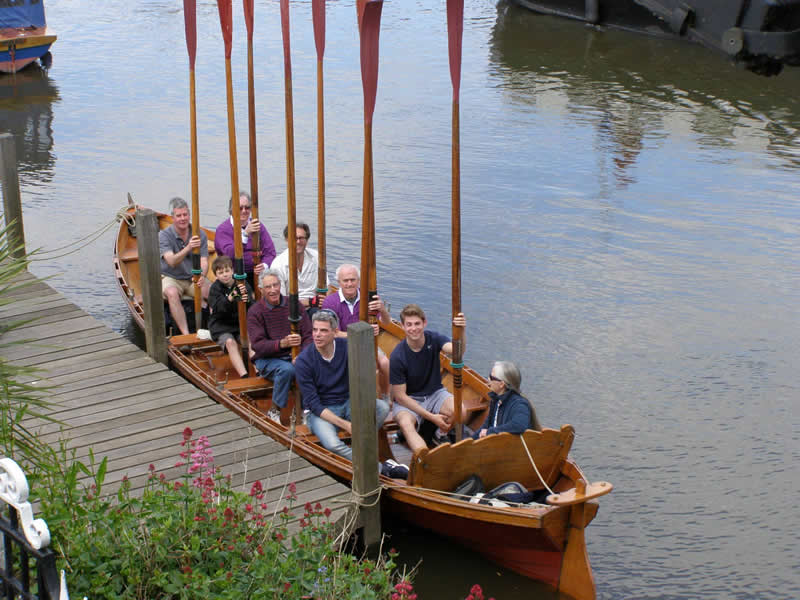
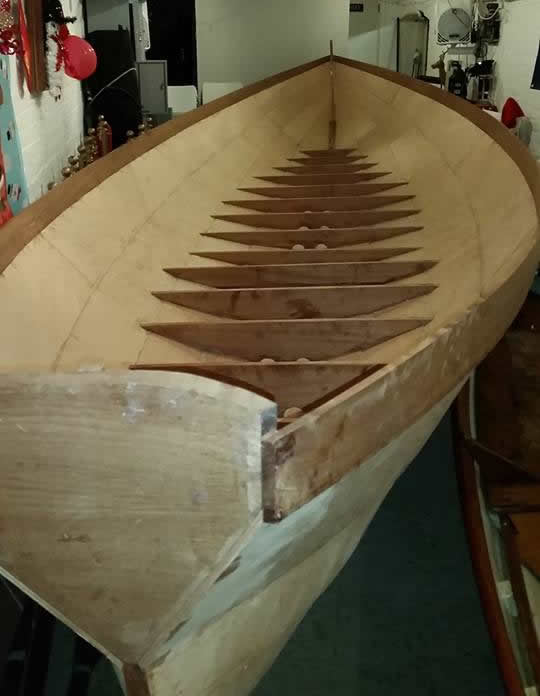
Thames Racing Skiff
A Thames Racing Skiff is a traditional hand built craft of a design which has been seen on the Thames and other waterways for over 100 years, and which remains virtually unchanged.
Skiff racing is kept alive by a small number of enthusiastic clubs, mostly based on the Thames, and by the efforts of those who organise regattas and other events throughout the year.
Please take a look through our site - clubs are always on the lookout for new members, and skiffing is a fun way of taking exercise at any intensity level you choose.
